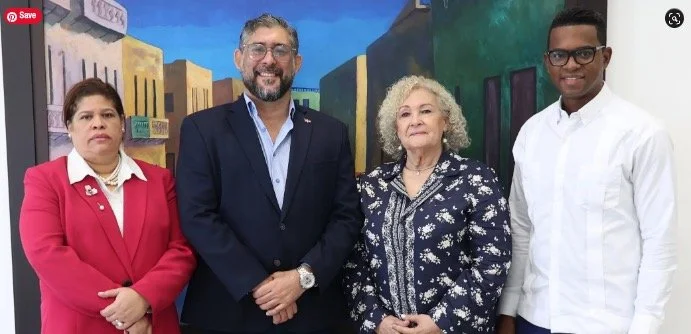Santo Domingo—The Dominican Republic will receive the first results of the international carbon credits market with a US$6.0 million payment by the World Bank (WB) in 2024.
According to Yvonne Arias, executive director of Grupo Jaragua and technical secretary of the Dominican Committee of Man and the Biosphere (MAB); Federico Franco, vice-minister of Protected Areas and Biodiversity; Solhanlle Bonilla, director of Sustainability, and Lemuel Familia, head of the Ecosystems Division of the Ministry of the Environment and Natural Resources, this payment would mark a before and after, because to meet the goal of reducing carbon dioxide (Co2) the country would be obliged to continue trading in this market.
Participating as guests at HOY’s Economic Meeting, the officials and the biologist recalled that in May 2021, the Dominican Republic’s Ministries of Finance and Environment and Natural Resources signed a historic agreement with the World Bank’s Forest Carbon Partnership Facility (FCPF), which will allow the country to receive payments of up to US$25 million for verifiable greenhouse gas reductions from forest carbon from that date until 2025, through the Dominican Republic’s emissions reduction program.
They highlighted the importance for the country of this fact to achieve the transition from activities harmful to water production to others beneficial to preserving this resource.
They explained that of the US$6.0 million the country will receive, 30% will be invested in protected areas. At the same time, the rest will go to agricultural associations that are part of the project because they have changed the intensive form of production.
On the subject, they added that a carbon dioxide market is being created, which must be so to have a balance, so there are already countries in the decontamination process, which will take longer for some. In contrast, for others that do not produce so many gases, it will be faster, so there is compensation for the forests, especially in the tropical areas of the world, for being the most efficient for reducing greenhouse gases.
They indicated that it is being collected in the country through a network that recognizes not only carbon but also the ecosystem services of the forests.

